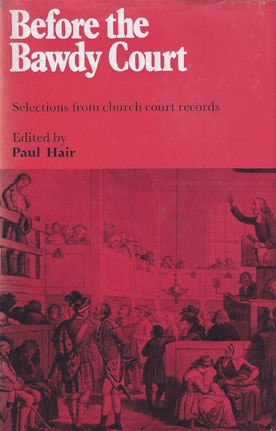We are now closed for the Christmas and New Year period, returning on Monday 5th January 2026. Orders placed during this time will be processed upon our return on 5th January.

Out of Print,/p>
The proceedings of the church courts of England and Scotland and the town courts of New England illuminate as few other sources can the emotional life of the common man from the 13th century, when surviving records begin, to the 19th century, when the courts fell into decline.
It was the court of lowest grade, in England organized by the Archdeacon, that 'corrected' those offences resulting from what an early century called 'an excess of animal spirits', a later one 'a lack of self-control' - drunkenness, brawling, defamation, cursing, offences against the Sabbath, the church and churchyard; and most common of all, fornication and matrimonial offences.
Chaucer said of his Archdeacon: 'Lechery was what he punished most', and in the 17th century the Archdeacon's court was familiarly known as the bawdy court.
Much may be gleaned from these court records, even where less than a complete summary of charge, answer, evidence, decision, penalty and response is given. The details of charge or evidence, and often the quoted words of accused, accusers and witnesses, give fascinating and moving glimpses of Everyman's domestic tragedies and comedies over the centuries.
Paul Hair has arranged 600 extracts - verbatim where the record is in English, translated into modern English where it is in Latin - as a continuous anthology of social behaviour. He appends a brief headline to each, so that its drift may immediately be grasped. In his introduction he sets the extracts in their historical context, and in terminal comments, grouped by offence, he discusses in detail their significance in terms of social history.
It is not easy to detect in these records the traditional landmarks of the history of the English-speaking peoples - the End of the Middle Ages, the Reformation, the Puritan Revolt, the Whig Revolution. But if it be accepted that the moral behaviour of the masses plays a fundamental part in the functioning and shaping of any society, then historians have. laid too much weight on dramatic changes at the vocal top, and given too little consideration to the less articulate but still vocal continuities below.